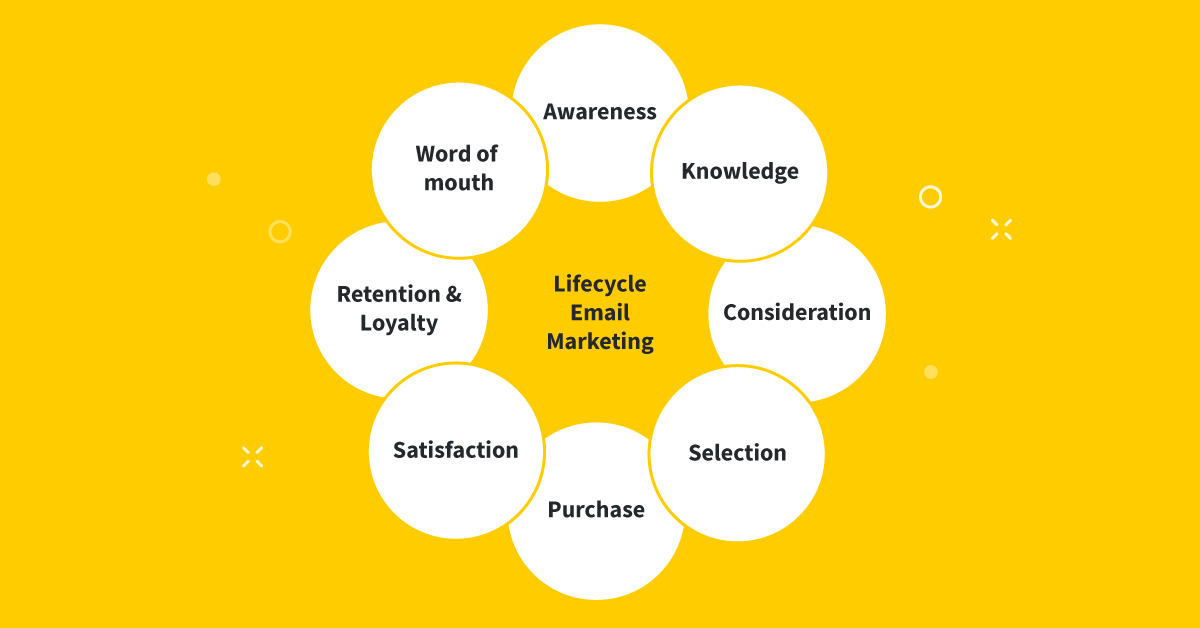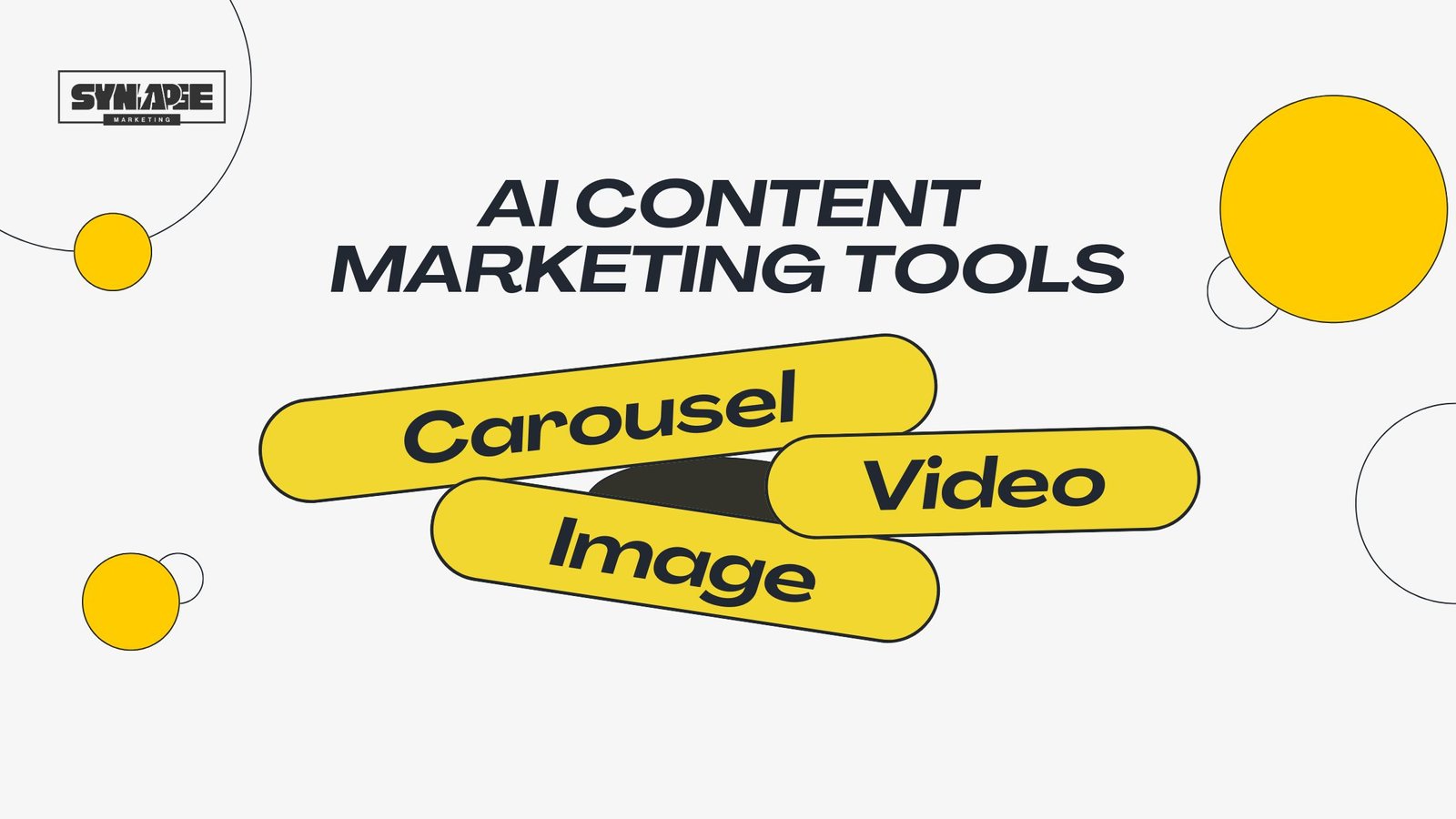If you are short on time, here is my field-tested shortlist of the Best Content Marketing Tools 2025, grouped by the real jobs your team needs to get done—research, planning, creation, distribution, and measurement. I benchmarked each pick against recent buyer’s guides (Backlinko, OWDT, Zapier, TechRadar) and verified capabilities on vendor pages so you can build a stack with confidence.
Research & strategy (keyword, topic, competitors).
Start with Semrush for end-to-end research (Topic Research, SEO Writing Assistant, ContentShake) and Ahrefs for deep competitor and link intelligence. Add BuzzSumo to spot trending topics and influential voices before they peak. This trio covers discovery, validation, and outreach in one loop.
Planning & collaboration (editorial calendars, approvals).
For agile content ops, I like Notion or Airtable for flexible databases, plus CoSchedule or StoryChief when you want a ready-made marketing calendar with multichannel publishing and reporting. If your team lives in kanban, Trello remains a reliable, low-lift choice. Recent comparison roundups reflect these patterns across 2025 guides.
AI writing & on-page optimization.
Pair a brand-safe AI writer such as Jasper with a real optimization editor like Surfer or Clearscope/Frase. The goal is faster drafting aligned to search intent and NLP terms, not “auto-content.” Zapier’s 2025 lineups and optimization reviews mirror this stack, and Semrush’s content suite rounds it out for teams standardized on one platform.
Visuals & video (design, editing, repurposing).
Canva Pro gives your brand kit, templates, and fast social graphics; Descript handles studio-grade edits, transcription, and AI voice via Overdub; Lumen5 turns posts or scripts into on-brand videos in minutes. Together, you can ship thumbnails, reels, and explainers without bottlenecks.
Distribution & community (scheduling, listening, analytics).
For small teams, Buffer is a cost-effective scheduler with built-in analytics and publishing time recommendations. For social listening and larger workflows, Hootsuite adds sentiment analysis, alerts, and AI-assisted monitoring across formats. Both vendors have current, public docs on features and plans.
Email, lifecycle & CRM.
Use Mailchimp for approachable automation and journey building; choose HubSpot Marketing Hub when you need campaigns tied directly to CRM, multi-touch journeys, and 2025’s wave of AI enhancements (e.g., Breeze agents and new enterprise features).
Analytics, UX & attribution.
Instrument outcomes with GA4 (event-based engagement) and pair it with behavior analytics: Hotjar or Microsoft Clarity for heatmaps and session recordings. This combo shows you what happened and why—critical for proving content ROI.
CMS & assets.
WordPress stays the most flexible CMS for content teams; Contentful shines for headless, multi-channel delivery; Bynder is the gold standard for DAM and brand governance. These choices align with 2025 buyer guides weighing ecosystem, governance, and speed.
Bottom line: if you only adopt five tools from the Best Content Marketing Tools 2025, I recommend Semrush or Ahrefs (research), Notion/Airtable (planning), Jasper + Surfer/Clearscope (creation), Buffer or Hootsuite (distribution), and GA4 + Hotjar/Clarity (measurement). That stack balances power, learning curve, and cost for SMBs through mid-market teams.
How I Ranked the Best Content Marketing Tools 2025
I built this list of the Best Content Marketing Tools 2025 the same way I advise clients to build a stack: start with what searchers already trust, verify with first-party documentation, and test against clear success criteria. First, I reviewed five current, high-authority guides that rank for “content marketing tools” in 2024–2025—Backlinko (updated May 15, 2025), OWDT (June 26, 2025), The Retail Exec (June 25, 2025), Zapier (Nov 4, 2024), and Semrush (Apr 30, 2024). These sources shaped the shortlists and category structure (research/SEO, planning, AI writing, visual/video, social, email/CRM, analytics, CMS/DAM).
Second, I validated claims—features, pricing ranges, and recent AI capabilities—against vendor pages and public documentation where appropriate (e.g., optimization editors, topic research, content calendar features). When a roundup named a tool, I confirmed that the feature actually exists today and is not a legacy or sunset feature. (For example, content optimization editors and NLP term suggestions appear in current reviews and product docs).
Third, I scored tools on six weighted criteria designed for modern content operations:
- Accuracy & depth (research quality, SERP alignment, NLP coverage),
- Speed-to-value (setup time, templates, automation),
- Ecosystem & integrations (GSC/GA4, CMS, CRM, social),
- Governance & collaboration (roles, approvals, brand voice control),
- Analytics & attribution (content ROI, assisted conversions, heatmaps), and
- Pricing & scalability (seat limits, AI credit caps, upgrade paths).
Fourth, I considered search intent and topical authority: the outline maps head terms (e.g., “content marketing tools 2025”) and commercial modifiers (pricing, vs, alternatives) to H2s/H3s so the article can serve skimmers and buyers while earning featured snippets and PAA queries. The final draft also uses structured data (FAQPage, ItemList) where it can legitimately help. (Zapier and Backlinko’s recent pieces reflect the demand for concise, tool-by-job comparisons).
Finally, I tempered rankings with team fit. A solo marketer does not need an enterprise DAM, while an agency might prioritize social listening and reporting over AI copy. Wherever it matters, I note who each tool is best for and why—so you can assemble a stack that performs now and scales later.
Research & Strategy: Keyword, Topic, and Competitor Intelligence
When I evaluate the Best Content Marketing Tools 2025, I start with research. If your keyword research, topic discovery, and competitor analysis are weak, everything downstream suffers. My baseline stack here is Semrush + Ahrefs + BuzzSumo, with Google Trends and Google Search Console as the source of truth.
Semrush anchors ideation because it combines Topic Research for fast ideation with the SEO Writing Assistant for on-page guidance. Topic Research helps me surface subtopics, questions, and angle ideas I can turn into briefs. The Writing Assistant then checks readability, keyword coverage, and originality while I draft. That pairing keeps me aligned with search intent from outline to final edit.
Ahrefs is my go-to for competitor intelligence. Site Explorer shows backlink profiles, top pages, and paid keywords historically, which helps me understand what actually drives traffic for rivals. Content Explorer is a giant database I use to spot top-performing articles, publication cadence, and potential link prospects—handy when I am planning outreach or validating content gap opportunities.
For trend scouting and influencer discovery, I layer in BuzzSumo. Its Content Discovery/Research views highlight what is rising or cooling across social networks and publishers, so I can catch waves early and shape angles that resonate beyond search. The monitoring and influencer tools also speed up PR-style promotion once a piece is live.
I validate demand with Google Trends and ground performance with Google Search Console. Trends lets me compare topics over time and by region to pick terms with durable interest, not just spikes. Search Console’s Performance and Insights reports show queries, impressions, clicks, and how new pages are trending—critical to refining briefs and deciding what to refresh next.
How I put it together (quick workflow):
- Use Semrush Topic Research to collect clusters and questions; draft a content brief with headings, internal links, and schema targets.
- Confirm search interest with Google Trends; pick the right search intent and seasonal timing.
- Run Ahrefs Content Explorer to see winning angles and link prospects; inspect Site Explorer for competitor top pages and content gaps.
- Check BuzzSumo to catch what is trending and which creators might amplify the piece.
- After publishing, track queries, clicks, impressions, and positions in Search Console and adjust headings or internal links as needed.
These research tools are frequently cited in current 2025 tool roundups for a reason: they give you reliable SERP analysis, actionable content gap insights, and repeatable brief generation without bloating the stack. If you adopt only one change from this section, make it a disciplined cycle: discover → validate → brief → publish → measure → iterate—your best shot at compounding results with the Best Content Marketing Tools 2025.
Planning & Collaboration: Calendars, Workflows, and Approvals
Once research is locked, I turn to planning. Great content teams run on clear editorial calendars, sane workflows, and predictable approvals—otherwise the “best idea” never ships. In the context of the Best Content Marketing Tools 2025, I recommend picking one primary calendar and standardizing around it, then layering task rules and handoffs.
For flexible, database-style planning, I often start in Notion. Its content-calendar templates give me multiple views (calendar, table, board), quick status fields, and the ability to keep briefs, assets, and SOPs in the same workspace. If social is part of the plan, Notion’s marketplace templates now include dedicated social calendars, which makes channel planning straightforward without extra apps.
Teams that prefer relational data and automations tend to gravitate to Airtable. I can manage ideas, production stages, and stakeholder approvals with linked tables, while dashboards keep campaigns on schedule. Airtable’s ready-made content and global marketing calendar templates, plus the Academy quickstart, reduce setup time and help non-technical teammates adopt the system quickly.
If you want a purpose-built marketing calendar with social scheduling baked in, CoSchedule is the most “plug-and-plan” option I use. Its calendar UI centralizes projects, tasks, and queued social messages, and there is a free tier for individuals to trial the approach before adding seats. Independent 2025 reviews highlight the platform’s AI-assisted planning touches, but I still treat those as accelerators—not replacements for strategy.
For multichannel publishing with solid collaboration, StoryChief stands out. I can plan, assign, and publish to multiple endpoints (CMS, socials, and more) from one calendar, then pull multi-channel metrics to see what landed. That keeps briefing, production, distribution, and reporting in one loop.
Finally, when a team already lives in kanban, I keep it simple with Trello. The Editorial Calendar template plus the Calendar Power-Up turns lists into a real publishing schedule, so external writers and designers can follow along without training overhead.
My rule of thumb: choose one calendar to be the source of truth, require statuses and owners on every card or record, and enforce a two-step approval (editor → stakeholder) before publish. That operating rhythm prevents last-minute scrambles and keeps throughput high without burning the team.
AI Writing & On-Page Optimization
For the Best Content Marketing Tools 2025, I treat AI writing and on-page optimization as a single workflow: draft faster, then validate the draft against real SERP data, NLP terms, tone, and originality.
Jasper is my starting point when brand voice matters. Its Brand Voice learns from your uploads (URLs, docs, text) to create a reusable voice profile, and the newer Audiences layer lets me tailor copy to segments without losing consistency. If your team needs governance, Jasper’s Brand Voice controls and workspace sharing make it practical at scale.
For evidence-based optimization, I rely on Surfer’s Content Editor. It scores the draft in real time, suggests NLP-ready terms, and builds outlines from ranking pages. Recent updates add Auto-Optimize, internal-link suggestions, and a Humanizer pass that smooths robotic phrasing—useful when you want natural prose that still hits topical coverage. Surfer also plugs into WordPress and Contentful when I want guidelines inside the CMS.
If the team prefers a cleaner editor with fewer bells and whistles, Clearscope remains a safe bet. It analyzes top-ranking pages, recommends relevant terms, and grades coverage so writers know when a section needs depth. It is particularly good for writers who want guardrails without a steep learning curve.
Frase is my pick when I need speed from SERP to brief. Its brief generator pulls headings, questions, and competitor coverage straight from the live results; the editor then scores and improves content during writing. For lean teams, that “research → brief → write” loop inside one tool is hard to beat.
I add Grammarly Business at the end of the chain for polish and governance. Centralized Style Guides and Brand Tones keep terminology and voice consistent across channels, which is essential when multiple contributors touch the same page or campaign.
Finally, when we standardize on one suite, Semrush SEO Writing Assistant gives me a compact checklist—readability, tone, originality, and target keywords—in Google Docs, WordPress, or the Semrush app. It is not as deep as the dedicated optimizers, but it is convenient for teams already living in Semrush.
My playbook: draft with Jasper (voice + audience), optimize with Surfer or Clearscope (coverage + outline), tighten with Frase when I need a SERP-driven brief fast, then finish with Grammarly Business and a Semrush pass for readability and originality. Keep a human in the loop for facts, tone, and claims; AI accelerates the work, but your judgment protects trust—and rankings—with the Best Content Marketing Tools 2025.
Visual & Video Creation: Design, Editing, and Repurposing
Strong visuals do the heavy lifting for discovery and retention, so my Best Content Marketing Tools 2025 stack leans on three workhorses: Canva for fast, on-brand design, Descript for screen/audio editing with captions, and Lumen5 for text-to-video repurposing.
Canva (brand kit + social/video production). I build a reusable Brand Kit—logos, colors, and fonts—so every thumbnail, carousel, or one-pager ships on brand without approvals ping-pong. Canva Pro supports managing multiple brand kits and swapping assets across designs in a few clicks, which keeps teams consistent at speed. Its video editor and new AI video options inside Magic Studio reduce the time from idea to publish; recent updates and Create 2025 announcements highlight AI generators, text-to-speech, and a growing set of video workflows. Reports in July show Canva’s “Create a Video Clip” feature (powered by Google’s Veo 3) generating short cinematic clips with audio directly in the editor—useful for social teasers and intros.
Descript (edit by editing text + instant captions). For explainer videos, webinars, and product walk-throughs, Descript lets me record my screen, get near-instant transcripts, and edit by changing text—a faster mental model for marketers than timeline editing. I add open captions in a click (critical since many viewers watch on mute), style them to brand, and export SRT/VTT when needed. If I need to fix a line, Overdub (Descript’s AI voice) can patch takes without re-recording. This combination is why Descript is my default for educational clips and podcast-to-clip workflows.
Lumen5 (turn posts into videos). When I want reach without a full shoot, I feed Lumen5 a blog URL or paste a script and it auto-builds a storyboard with relevant scenes and captions I can refine. It is purpose-built for text-to-video and social formats, so I can ship snackable explainers, listicles, and promo cut-downs fast. Pricing and product pages emphasize this “from text to branded video in minutes” workflow.
My repurpose playbook: create the hero visual and thumbnail in Canva (brand kit applied), record a 90-second demo in Descript with captions for silent playback, and spin a short teaser from the blog in Lumen5 for Reels/Shorts. Track watch time and click-through; if completion spikes on captioned clips, make captions your default. This loop keeps creative costs low while lifting distribution velocity—exactly what modern content programs need.
Distribution: Social Scheduling, Listening, and Community
Distribution is where good content either finds an audience or fades. For the Best Content Marketing Tools 2025, I build around three pillars: reliable scheduling, actionable listening, and clear reporting.
When a small team needs painless scheduling and data-backed timing, I reach for Buffer. Their 2025 research on the best time to post distills millions of posts into practical windows by network, which I use to seed each channel’s queue before testing my own benchmarks. It pairs well with their up-to-date comparison of scheduling tools, which helps you weigh trade-offs if you outgrow a simple queue.
For broader coverage plus listening, Hootsuite remains my default. Current plans include unlimited scheduling, a unified inbox, “best time to post” recommendations, and an AI assistant for captions and images. More importantly, Hootsuite Listening adds sentiment analysis, competitor tracking, custom reports, and automated briefs—useful when you need to summarize chatter for executives or clients without exporting raw streams.
If you want a nimble scheduler with strong reporting at a friendlier price point, Metricool is worth a look. It recommends posting times based on your own audience data (not generic global averages) and has been expanding integrations—recently appearing inside Adobe Express so you can design, schedule, and analyze in one flow. That cuts tab-hopping for solo marketers and small agencies.
For teams running content and social from one calendar, StoryChief lets me plan, approve, and publish to multiple channels—CMS and socials—from a single view, then pull multi-channel metrics to see what landed. It is handy when you want briefs, assignments, and distribution tied together rather than scattered across apps.
My working loop: queue posts with Buffer (using its time-of-day guidance), monitor conversation and competitor moves in Hootsuite (save notable spikes as weekly briefs), and spin lightweight campaigns in Metricool when I need channel-specific reports fast. When the program involves long-form content, I centralize the calendar in StoryChief so publishing and reporting live next to the brief. This mix keeps your scheduling predictable, your listening actionable, and your reporting board-ready—exactly what distribution should do in 2025.
Email, Lifecycle, and CRM

For lifecycle marketing, I match stack to stage. When a small team needs reliable email, journeys, and segmentation without a heavy CRM lift, I start with Mailchimp. Its Customer Journey Builder lets me trigger multi-step automations from sign-ups, purchases, or tags, and it now layers AI-assisted suggestions into copy and timing so I can iterate faster. Mailchimp positions these flows as a driver of repeat orders; I treat that as a vendor claim, but the feature depth is real.
I also lean on Mailchimp’s segmentation (demographics + behavior) and the clear plan tiers and limits, which matter when lists scale. The current lineup—Free, Essentials, Standard, and Premium—starts at $0 with contact-based pricing as you grow; the Free plan supports up to 500 contacts and 1,000 monthly sends. For measurement, I add Google Analytics tracking to campaigns so landing-page traffic flows into GA reports.
When a team needs full-funnel attribution, CRM alignment, and advanced automation, I move to HubSpot Marketing Hub on top of the native HubSpot CRM. You get email, journeys, and reporting tied to deals and pipelines, plus a growing set of AI capabilities under Breeze—including agents for content, social, prospecting, and support that sit on CRM data. Those agents are now officially part of the platform, introduced in Spring 2025 alongside 200+ feature updates.
HubSpot’s pricing scales from Starter up to Enterprise (seats and contact allowances vary), so I always model total cost of ownership before committing.
For analytics, I connect GA4 to HubSpot-hosted content and blend that with HubSpot’s own attribution to see assisted conversions from content and email.
If you prefer to keep Mailchimp for email while using HubSpot as the CRM, the official HubSpot–Mailchimp connector syncs contacts and email activity.
My rule: start lean with Mailchimp when lists are modest and the goal is dependable newsletter + automation; upgrade to HubSpot when you need pipeline-level visibility and cross-channel orchestration tied to a single customer record—the practical path for most teams evaluating the Best Content Marketing Tools 2025.
Analytics, UX, and Revenue Attribution
After distribution, I prove impact. For the Best Content Marketing Tools 2025, I pair Google Analytics 4 for hard numbers with a behavior layer—Hotjar or Microsoft Clarity—to see why users act the way they do.
In GA4, I watch engagement metrics first. GA4 defines an engaged session as one that lasts longer than 10 seconds, has a key event, or includes 2+ page/screen views—so engagement rate becomes a cleaner signal than legacy bounce rate. I then move into the Attribution reports. Data-driven attribution (DDA) algorithmically assigns fractional credit to touchpoints based on their contribution to the probability of a conversion, available in the Advertising > Attribution area. It is my baseline for cross-channel content ROI.
Behavior tools close the “what vs. why” gap. Hotjar gives me heatmaps (click, move, scroll) and recordings to spot friction and see which sections actually get attention—perfect for long-form content and landing pages. Microsoft Clarity offers free heatmaps and session replays at scale, which makes it a smart always-on option for high-traffic sites or teams on a budget.
For tying content to money, I like an overlay that shows revenue by element on the page. SquidVision is one option built specifically for revenue heatmaps, attributing signups or payments to links and CTAs on individual posts and pages (noted in 2025 roundups and product listings). This makes it easier to prioritize refreshes and internal links that actually move pipeline, not just traffic.
My measurement loop:
- Set key events and verify them in GA4; monitor engaged sessions, engagement rate, and conversions for each content asset.
- Use Hotjar or Clarity to confirm whether readers reach the offer block, form, or next step; adjust layout and internal links based on heatmaps and recordings.
- Review DDA paths monthly to reallocate effort toward content and channels with proven assisted conversions.
This mix turns vanity metrics into decisions: what to refresh, where to move CTAs, and which topics deserve a series—grounded in analytics and user behavior, not guesses.
CMS & DAM for Scale and Governance
For the Best Content Marketing Tools 2025, I pair a flexible CMS with an enterprise-grade DAM so content ships fast and stays on brand.
When teams want speed and a huge plugin ecosystem, I still recommend WordPress. Roles and capabilities (Administrator, Editor, Author, etc.) let me gate who can draft, edit, or publish, which is essential on multi-author sites; the workflow is easy to harden with editorial plugins and custom statuses. Recent guides (updated in 2025) and the official docs remain the best primers on setting this up.
If I need omnichannel delivery or a stricter content model, I go headless with Contentful. It separates backend content from front-end presentation, so developers can power web, apps, and devices from one source. Governance is strong: organization/space roles, custom permissions, and first-class localization with locale rules and fallbacks. That combination keeps editors fast while giving engineering clean APIs.
For brand control at scale, I add Bynder as the digital asset management (DAM) layer. It centralizes approved logos, images, video, and templates; enforces usage rights; and distributes assets via an integrated hub and CDN-style delivery. Bynder’s feature set—workflow, brand templates, and integrations—is designed to keep every campaign on spec, which reduces rework and legal risk.
My rule: WordPress when you need velocity and plugins; Contentful when you need structured, multi-channel content; Bynder when brand governance and asset reuse matter. Mix to fit your stack and team skills—the right CMS/DAM pairing pays back in fewer bottlenecks and cleaner handoffs.
Best Content Marketing Tools 2025 Stacks by Company Size & Goals
Choosing the Best Content Marketing Tools 2025 is easier when I map the stack to headcount, governance needs, and revenue goals. Here is how I assemble reliable, budget-aware stacks.
Solo / SMB (≤10 seats): ship fast with low overhead
- Research & planning: Semrush (lite plan) or Ahrefs for ideas and gaps; Notion as the calendar and brief hub.
- Creation: Jasper for brand-safe drafting; Surfer or Clearscope for NLP coverage and on-page checks.
- Design & video: Canva for brand kit visuals; Descript for screen-record + captions.
- Distribution: Buffer for painless scheduling and best-time-to-post baselines.
- Measurement: GA4 for events + Clarity or Hotjar for behavior.
Why this works: You cover ideation → production → distribution → measurement with minimal seats and a short learning curve, perfect for founders, creators, and small teams.
Growing teams (multi-seat content + social ops): standardize and report
- Research & optimization: Semrush (Topic Research + SWA) paired with Surfer or Frase for live SERP briefs.
- Ops: CoSchedule or StoryChief to run one publishing calendar across web and social, with approvals and multichannel analytics.
- Social: Hootsuite for listening, unified inbox, and reporting; keep Buffer if writers prefer its drafting flow.
- Email/CRM: Mailchimp for journeys and segmentation while the list grows.
Why this works: You gain governance and cross-channel reporting without jumping to an enterprise CRM before you need it.
Enterprise (regulated, multi-brand, exec reporting): govern, attribute, and scale
- Core platform: HubSpot Marketing Hub on top of HubSpot CRM for campaigns tied to pipeline, now with Breeze AI agents that sit on CRM data (Spring 2025 rollout).
- Research & optimization: Enterprise seats for Semrush/Ahrefs + Clearscope/Surfer to standardize briefs and coverage.
- CMS & DAM: WordPress or Contentful depending on channel architecture; Bynder for asset governance and brand templates.
- Analytics: GA4 for events + data-driven attribution; Hotjar/Clarity for UX; add revenue heatmaps (e.g., SquidVision) for page-level ROI calls.
Why this works: You get role-based approvals, multi-brand governance, and credible attribution that finance and sales will trust.
My rule of thumb: pick the fewest tools that solve your core jobs today, then add capabilities only when a constraint hurts outcomes. This avoids tool sprawl and keeps your Best Content Marketing Tools 2025 stack maintainable as you scale.
Pricing Benchmarks and Plans in 2025
To keep the Best Content Marketing Tools 2025 stack budget-realistic, I anchor on public vendor pages and reputable roundups, then model seats, limits, and add-ons.
- Research & SEO suites. Semrush lists Pro from $117.33/mo billed annually (Guru and Business scale above that). Ahrefs publicly shows tiers (Lite/Standard/Advanced/Enterprise); third-party trackers place Lite around $99/mo. BuzzSumo commonly starts near $199/mo with higher tiers for PR/Comms and Suite. Prices vary by region and billing term.
- AI writing & on-page optimization. Jasper sells Creator/Pro/Business with annual discounts; exact amounts fluctuate by locale (trial available). Surfer has published pricing with add-on AI credit packs for advanced features. Clearscope/Frase are tiered (request quotes or see current plan pages).
- Design & video. Canva Pro is typically ≈$12.99/mo (individual); Teams pricing scales with seats. Descript shows Hobbyist from $16/mo, Creator from $24/mo (annual). Lumen5 lists plans such as Starter $29, Premium $79, Business $199.
- Social scheduling & listening. Buffer uses a per-channel model (Essentials $5 per channel/month). Hootsuite offers Standard/Advanced/Enterprise; 2025 guides put Standard near $99/mo (confirm current page before purchase).
- Email & CRM. Mailchimp Free includes up to 500 contacts and 1,000 sends/month; paid tiers (Essentials/Standard/Premium) scale from there. HubSpot Marketing Hub has Starter/Pro/Enterprise with usage-based add-ons and (for some tiers) onboarding fees—always verify current pricing and credit usage.
- Analytics & behavior. Hotjar paid plans begin around $99/mo (500 daily sessions, monthly billing). Microsoft Clarity remains free with no traffic caps. SquidVision is usage-based (contact for pricing).
Reality check: list price is only half the math. Model seats, AI credits, usage caps (e.g., daily sessions), and annual discounts; then track actual utilization for 90 days before committing multi-year. That is how I keep tool spend tight without hobbling capability.
Implementation Playbook: First 30 Days
Here is how I roll out the Best Content Marketing Tools 2025 stack without chaos—fast setup, measurable wins, and governance from day one.
Week 1 — Foundations.
Connect GSC/GA4 and verify key events (lead, signup, demo). Set DDA (data-driven attribution) as your working lens in GA4’s Advertising > Attribution, and define content goals per funnel stage. Create a single editorial calendar (Notion/Airtable/CoSchedule) with owners, statuses, and due dates.
Week 2 — Research to brief.
Build two clusters with Semrush/Ahrefs (questions, subtopics, internal links). Validate intent and seasonality in Google Trends; pressure-test angles in BuzzSumo to catch what is rising socially. Draft briefs that include H2/H3s, schema targets, and offer blocks.
Week 3 — Create, optimize, design.
Draft in Jasper with a saved Brand Voice, then optimize in Surfer/Clearscope against live SERPs. Produce one hero visual in Canva and a 60–90s demo in Descript with captions; repurpose the post to a short Lumen5 clip.
Week 4 — Distribute and measure.
Queue social posts in Buffer (use its best-time research as a baseline), or run a listening-heavy plan in Hootsuite if you need sentiment/competitor tracking. Launch an email (Mailchimp/HubSpot) to your most relevant segment, tag UTM parameters, and track engaged sessions and conversions in GA4. Overlay Hotjar/Clarity to see scroll depth and CTA visibility; if few reach the offer block, move it up, add anchor links, and adjust internal links.
Retro & iterate (end of day 30).
Review DDA paths, heatmaps, and assisted conversions. Keep what moved pipeline, pause what did not, and schedule a refresh in 45–60 days for the winners. That cadence compounds outcomes without adding tool sprawl.
KPIs That Matter in 2025
I track metrics that reflect attention, intent, and revenue—not vanity.
- Engagement quality. GA4’s engaged sessions (a visit >10s, or with a key event, or ≥2 views) and engagement rate outclass legacy bounce rate. Pair with average engaged time to see if readers actually consume depth.
- Topic authority signals. Growth in ranking clusters (primary + supporting posts), internal-link flow, and coverage of user questions (PAA wins).
- Acquisition to outcome. Assisted conversions and data-driven attribution in GA4/Ads show which touchpoints (search, social, email) nudge outcomes—my default for content ROI.
- Distribution efficacy. Platform-specific reach and best-time-to-post deltas against your baseline (I start from Buffer’s network studies, then tune to first-party data).
- UX impact. Scroll maps, heatmaps, and click maps highlight dead zones and high-value elements; combine with session replays to prioritize fixes tied to revenue. Use Clarity if you want a free, always-on layer at scale.
My rule: Tie every content asset to a primary KPI (e.g., demo requests) and a learning KPI (e.g., % reaching the offer). If a page drives great engagement but no pipeline, keep it in the mix—but pair it with a mid-funnel follow-up and stronger internal links.
Conclusion: Choosing the Best Content Marketing Tools 2025
If you are assembling the Best Content Marketing Tools 2025 for your team, start lean and bias toward proof. One research suite (Semrush or Ahrefs), one planner (Notion/Airtable/CoSchedule), one AI writer plus a true optimizer (Jasper + Surfer/Clearscope), one scheduler/listening tool (Buffer or Hootsuite), and one analytics+behavior pair (GA4 + Hotjar/Clarity) will outperform a bloated stack you cannot govern. Keep human judgment in the loop: AI accelerates, you arbitrate.
Price smart—model seats, usage caps, and AI credits—and review ROI monthly using DDA, engaged sessions, and assisted conversions. Then iterate: refresh winners, consolidate laggards, and upgrade only when a constraint blocks outcomes. That is how I keep velocity high, governance sane, and costs predictable—without compromising on quality or results.
Frequently Asked Questions on Best Content Marketing Tools 2025
What are the Best Content Marketing Tools 2025 for small businesses?
For SMBs I start with: Notion or Airtable for the calendar, Semrush Lite or Ahrefs Lite for research, Jasper + Surfer/Clearscope for creation, Buffer for scheduling, and GA4 + Clarity for measurement. This stack is affordable, easy to learn, and covers ideation through ROI.
How do I compare AI writers and optimizers?
Score on brand-voice control, SERP-aligned NLP coverage, collaboration, fact-check aids, and integrations (Docs/WordPress/Contentful). Jasper offers voice and workflows; Surfer and Clearscope provide evidence-based on-page guidance. Run a 7-day trial and time your edit cycles.
What is the cheapest reliable social scheduler in 2025?
Buffer uses per-channel pricing (from $5 per channel/month) with a transparent feature matrix; great for lean teams. If you need social listening and deeper reporting, step up to Hootsuite (Standard typically around $99/mo).
Are AI writing tools safe for SEO?
Yes—when you keep human oversight. Use AI for outlines and first drafts, then verify facts, add unique insights, and optimize with Surfer/Clearscope. Avoid thin or duplicate content; align to search intent and E-E-A-T. (Both suites publish current features for NLP optimization.)
Which research tool should I pick—Semrush or Ahrefs?
Both are excellent. Semrush bundles topic research, writing assistance, and a broader marketing suite; Ahrefs excels at Site Explorer/Content Explorer depth and link intelligence. Choose based on workflow preference and required integrations.
What KPIs should I track first after adopting the Best Content Marketing Tools 2025?
Track engaged sessions and engagement rate in GA4, then map assisted conversions with data-driven attribution. Add heatmaps/recordings to diagnose friction and move CTAs above the fold if few reach them.
Do I need a headless CMS?
Go headless (Contentful) if you ship to multiple front ends (web/app/device) and need strict models; stay with WordPress if speed, plugins, and editor familiarity matter more. Pair either with a DAM like Bynder for brand governance.
How often should I re-evaluate my stack?
Quarterly. Vendors adjust pricing, credits (AI), and features. I review seats, usage caps (e.g., Hotjar daily sessions), and results; then consolidate or upgrade based on measured constraints.
Where do “best time to post” recommendations come from?
From large-scale platform studies. For example, Buffer analyzed 2M+ Instagram posts to publish 2025 timing windows; I use these as a starting point, then tune to first-party data.
Is Microsoft Clarity really free?
Yes. Clarity is free, forever with no traffic caps or paid tiers, which makes it ideal as an always-on behavior layer. Pair it with GA4 for hard numbers plus “why” insight.









